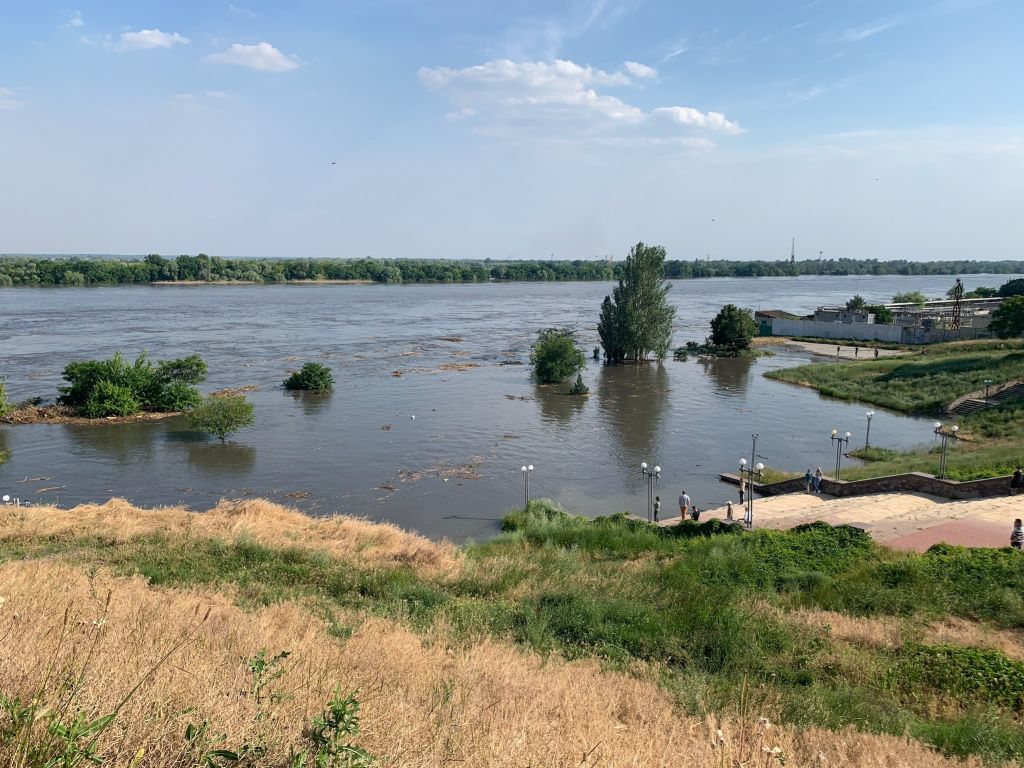
The destruction in the early hours of June 6 of Ukraine’s massive Nova Kakhovka dam on the Dnieper River is a dangerous escalation of the war between Ukraine and Russia. It risks massive human and ecological consequences to communities downstream being hit by vast floodwaters, and also threatens a potentially catastrophic nuclear accident. World leaders are also calling it a war crime.
Because of the central role that water plays in daily life and in our economies, there is a long history of violence associated with water resources, going back 4,500 years. This includes conflicts over access and control of water, attacks on water systems, and the use of water as a weapon. But for the very reason that water is so critical to our economies and public health, international law now explicitly prohibits attacking civilian water infrastructure.
Kakhovka Dam, one of the largest in Europe, was built in the late 1950s to provide hydroelectric power, irrigation water, and improved navigation on the Dnieper River which flows from Russia through Belarus and Ukraine before emptying into the Black Sea. When full—and it was full when it was destroyed—the reservoir contains 18 cubic kilometers (nearly 5 trillion gallons) of water. That’s around four times the volume of California’s largest reservoir, the Shasta reservoir, and about half the volume of Lake Mead, the largest reservoir in the United States. The reservoir behind the dam also supplies critical cooling water to the Zaporizhzhia nuclear power plant, and feeds water into the North Crimea Canal, delivering nearly 80% of Crimea’s water.
Read More: Ukraine Wants Russia to Pay for the War’s Environmental Impact
International Atomic Energy Agency experts say the nuclear plant, at present, has backup cooling water in ponds by the reactors, but they are continuing to monitor the situation closely. Loss of cooling could precipitate a catastrophic meltdown.
Water and water systems have been the targets of attacks from the beginning of this war. Researchers have documented more than 50 such attacks on dams, water supply systems, city water treatment plants, pipelines, and other facilities. At the beginning of the war, the Russians destroyed a small dam blocking water flows to Crimea. And civilian water treatment and delivery systems have been widely attacked by the Russians, cutting water supplies and sanitation services for hundreds of thousands of people. Meanwhile, the Ukrainians cut levees to flood areas north of Kyiv to halt the initial Russian armored assault on the capital. But until now, there had been nothing as massive or devastating as this event.
Attacks on dams are war crimes, as explicitly noted in Article 56 of Protocol I and Article 15 of Protocol II of the 1977 Protocols to the Geneva Conventions. These international laws prohibit attacks on infrastructure “containing dangerous forces” including explicitly “dams” and “dykes” if such attacks “may cause the release of dangerous forces and consequent severe losses among the civilian population.” Despite these prohibitions, conflicts over water and attacks on water systems are on the rise, with a dramatic increase in the past two decades.
There is precedent for Russian destruction of dams on the Dnieper River. In August 1941, during World War II, the retreating Soviet Army destroyed another dam on the Dnieper at Zaporizhzhia, the Dnieper Dam, to prevent it from falling into the hands of the advancing Nazis. At the time it was the largest dam in the world. The subsequent flooding reportedly killed tens of thousands of people downstream.
Until some form of independent confirmation of the cause of the destruction is available, there will be claims and counterclaims of responsibility, but initial physical evidence suggests the dam was destroyed by internal explosions. The dam has been under Russian control since the early days of the war and was reportedly mined by the Russians. Ukrainian President Volodymyr Zelensky has been warning about Russian plans to destroy the dam since late last year. In a statement released by Kyiv last night, Zelensky placed the blame for the dam’s destruction on the Russians and called an emergency meeting of Ukraine’s National Security and Defense Council.
Read More: Zelensky Feared the Flooded River In Ukraine Months Before Dam Explosion
The Ukrainians are evacuating thousands of people in towns and villages at risk of inundation from the floodwaters. Early reports also indicate that tons of oils and other chemical contaminants have been released into the floodwaters adding to the ecological damages that are occurring.
Tactically, the destruction of the dam eliminates a major crossing that could have been used by Ukraine in a thrust toward the south bank of the Dnieper and temporarily hinders a possible amphibious assault across the river. Another consequence of this action may be to significantly cut water flows to Russian-occupied Crimea.
More information about both the causes and consequences of the dams’ destruction will certainly come to light in the next few days. For now, the top priority is to ensure the safety of downstream populations, to evacuate communities that will be flooded, and to safeguard the continued operation of the cooling systems at the Zaporizhzhia nuclear plant. In the long run, the international community must enforce international laws of war and punish those who use water as a weapon or target of war.
More Must-Reads from TIME
- Inside Elon Musk’s War on Washington
- Introducing the 2025 Closers
- Colman Domingo Leads With Radical Love
- Why, Exactly, Is Alcohol So Bad for You?
- The Motivational Trick That Makes You Exercise Harder
- 11 New Books to Read in February
- How to Get Better at Doing Things Alone
- Column: Trump’s Trans Military Ban Betrays Our Troops
Contact us at letters@time.com